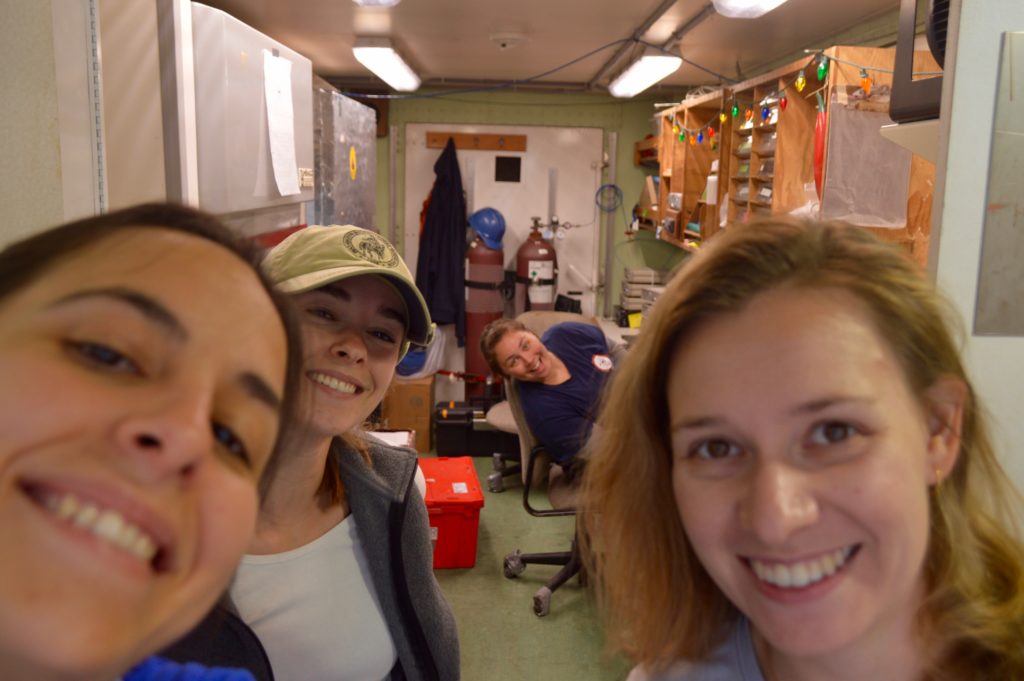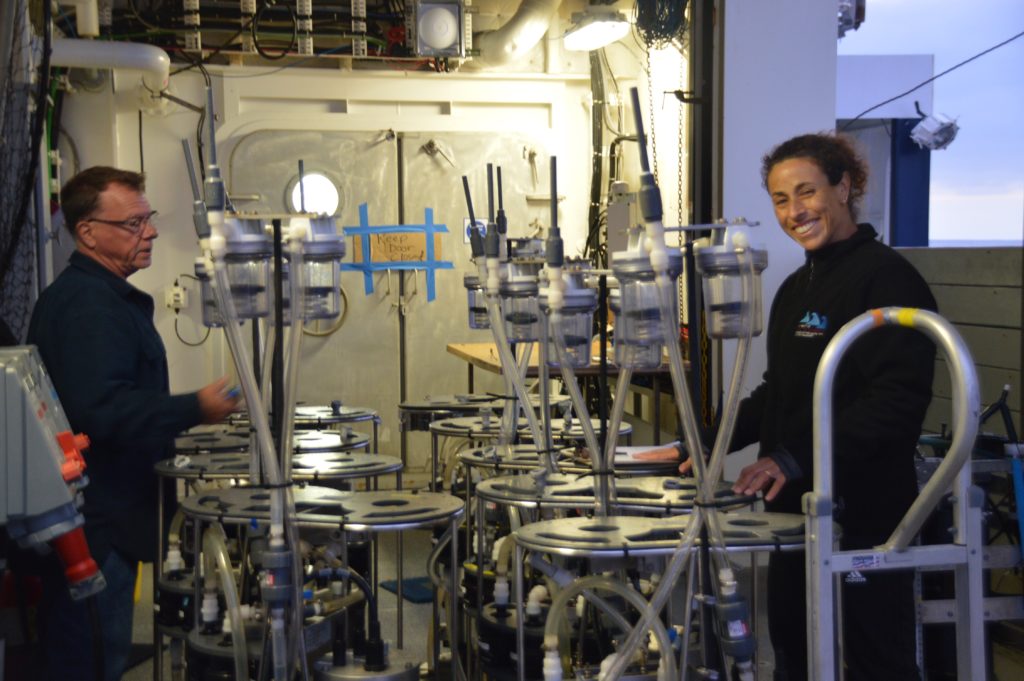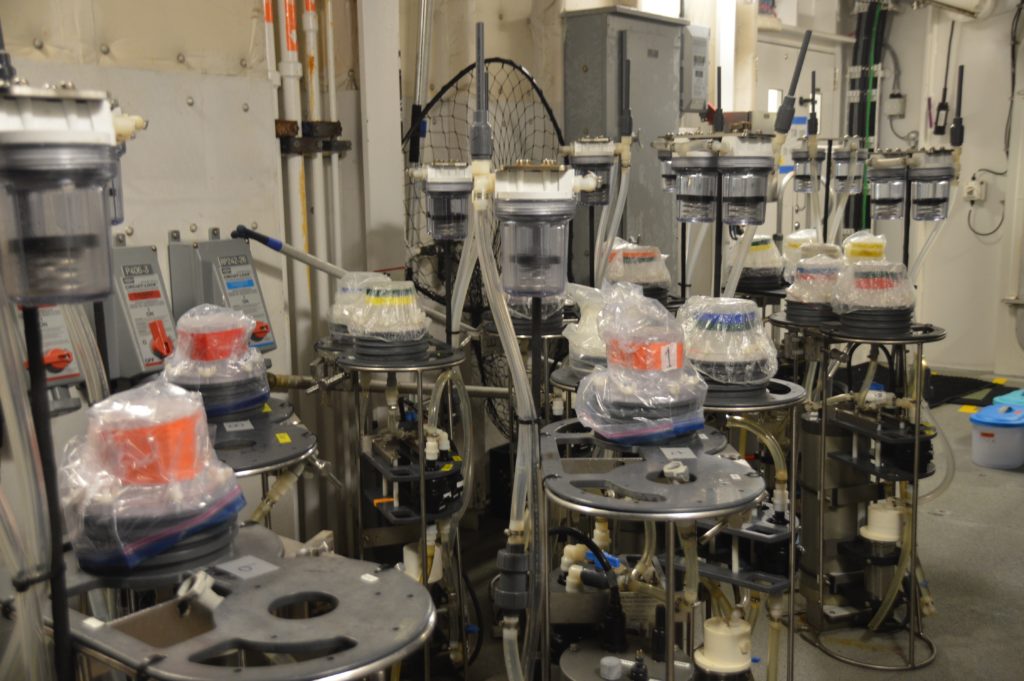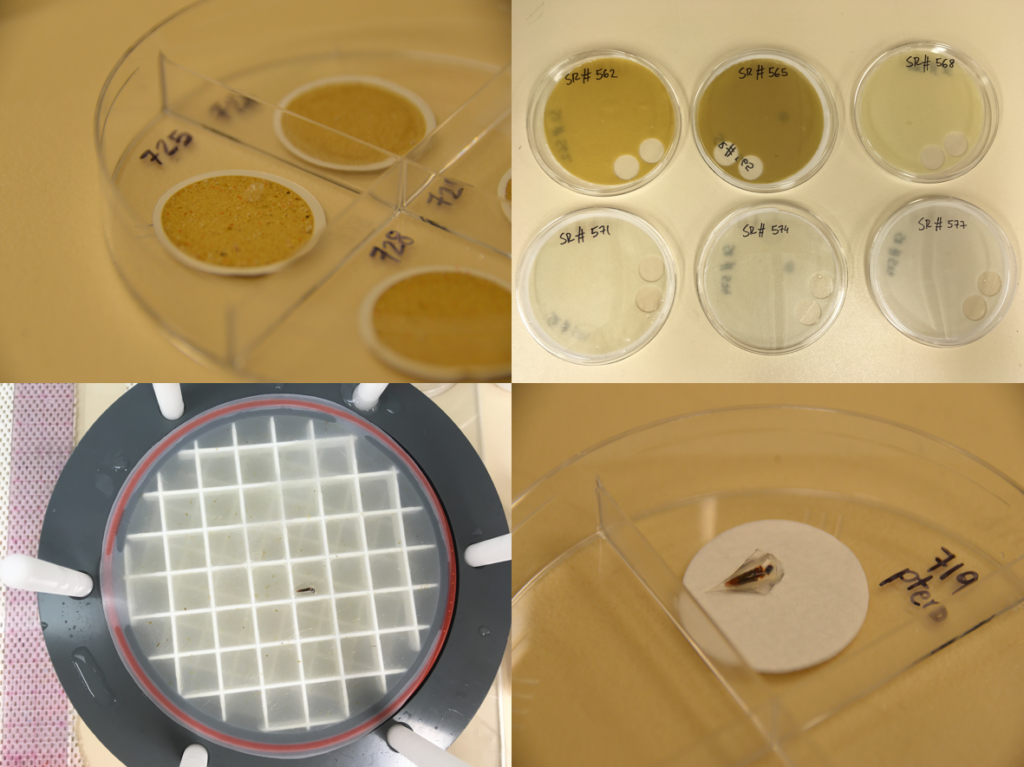
by Montserrat Roca Martí / NORTHEAST PACIFIC OCEAN /
I am Montserrat Roca Martí, but I like to be called Muntsa, which is a Catalan name. I come from Barcelona, Catalonia, where I finished my PhD one year ago.
These last several weeks have been hectic and at the same time very exciting, as they included a wedding (my own, to be precise) and a big move from Barcelona to Falmouth, Massachusetts, where I am now a Postdoctoral Investigator at the Woods Hole Oceanographic Institution (WHOI). However, I didn’t spend much time in my new office. Instead, I spent most of my time getting equipment ready and packing over one hundred items of all shapes and sizes before leaving for Seattle in August.

All this activity is devoted to the Export Processes in the Ocean from Remote Sensing (EXPORTS) expedition in the Northeast Pacific. The primary goal of this project is to understand how carbon is converted from inorganic matter (carbon dioxide) to organic matter by phytoplankton. This forest of tiny photosynthetic organisms, mostly algae, represent the primary way the ocean is able to sequester carbon from the atmosphere, regulating Earth’s climate.
So here I am at 50ºN 145ºW aboard the R/V Sally Ride. I never would have imagined that I’d be spending my honeymoon in open ocean waters with 40 people, none of whom are my husband!
I belong to Café Thorium, a team comprised of amazing people who love espresso and also studying thorium in the ocean. We are interested in thorium—a radioactive, metallic chemical element—because it provides very valuable information about the transport of other elements, such as carbon, from the ocean surface to depth as particles sink. My main role in this expedition is to collect particles from different depths down to 500 meters in order to determine their composition and concentration in water. To do that, we use in-situ pumps, which are like underwater vacuum cleaners equipped with filter heads that we lower into the ocean to specific depths and turn them on. These heads contain filters of different pore sizes through which thousands of liters of seawater pass during four to five hours of intense pumping.

This operation requires strong and skillful people to lift nine heavy pumps and attach them to the wire that will transport them to the desired depths. Fortunately, two of our team, Spike and Claudia, are very experienced and have done this complex endeavor hundreds of times.


When pumps are back on deck, we have to remove the filters as quickly as possible before the organic particles degrade. This is Rock & Roll time for Blaire and me. We sub-sample as many as 50 filters so we and others can measure a variety of parameters, including microbial activity, pigments and carbon. Only then can we safely store our precious samples until further analyses back at WHOI and a few other institutions. So far, we have collected over 500 samples from more than 77 cubic meters of water (more than 20,000 gallons) and counting! This is how I am spending my honeymoon!
